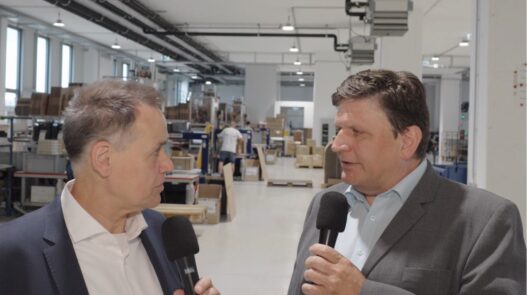Challenges during onboarding
Lateral entrants usually do not have any classic training or professional experience in logistics. What opens fresh perspectives on the one hand can lead to concrete hurdles in practice – both for new employees and for managers and teams.
Typical knowledge gaps include:
- Basics of warehouse logistics: How do warehouse structures work? What do terms such as goods receipt, order picking, cross-docking, etc. mean?
- Safety regulations: Correct behavior in the warehouse, handling hazardous goods or working near industrial trucks is new territory for many.
- Digital processes and systems: Many are not familiar with warehouse management systems (WMS). Scanners, pick-by-voice or MDE devices also must be mastered first.
- Timing and work rhythm: In logistics, speed, precision and personal responsibility count. Those not used to this need orientation and practice.
The expectations of lateral entrants themselves can also become a challenge:
- The desire for rapid induction meets unclear structures.
- The belief that one can simply jump in at the deep end meets complex processes.
- The hope of advancement often remains unfulfilled without targeted support.
Conclusion: If there is no structured induction, it quickly leads to frustration, mistakes and fluctuation. This is an expensive consequence for companies depending on manpower.
What makes a successful induction
Structure, support and clear communications are the most important levers so that lateral entrants are not just tagging along, but can get involved:
- Modular content: From basic knowledge about safety rules to site-specific processes – understandable, tangible and practical.
- On-the-job training, but with structure: learning as part of the work process, guided by experienced colleagues, but leaving nothing to chance.
- Individual support: Adjusted to prior knowledge and learning pace, with targeted support offers.
- Supplementary tools and checklists: Concrete guidance for everyday work (digital and analogue).
Best Practice: Employee Training at Sochor
A successful example of structured induction is our Xvise project with Sochor, a leading building materials retailer: Through practical on the job training, employees could swiftly be led to be productive.
“Xvise actively supported us in the conception and introduction of new logistics software. From the analysis of existing processes to the planning and subsequent visual presentation of new processes, we were guided by Xvise with expertise and a practical outside view. The team has developed very well during the many workshops.” Sascha Fröhlich – Organizational Development Sochor
Mentoring: Passing on knowledge instead of just training
A key success factor: mentors from your own team. They provide security, impart practical knowledge and help with social integration.
To ensure that this succeeds, mentors and managers are prepared specifically – for example, through coaching on issues such as:
- How do I promote independent work?
- Which feedback formats motivate – and which don’t?
- How do I deal with uncertainties or conflicts?
Example Mohren Brewery:
In a comprehensive development project, employees and logistics management alike were elevated in a targeted manner. Improved structures with measurable results were created. The induction became part of a learning organization.
Learning with fun: Gamification as a door opener
Gamification has been proven to increase motivation, especially among younger employees.
Playful content makes complex processes easier to understand and promotes knowledge transfer through interactive training, quiz formats or micro-learning via app.
Tips for the successful induction of lateral entrants
- Define clear goals: What should a new employee be able to do after weeks one, two or eight?
- Impart basic knowledge in advance: via initial training, short explanatory videos or handouts.
- Name those responsible: Who specifically guides the new employee?
- Create routines: induction plans, feedback meetings, initial successes.
- Use digital means: e-learning modules, knowledge databases, short tutorials.
FAQ – Frequently Asked Questions
How long does a structured induction take?
That depends on the tasks. As a rule, four to eight weeks should be scheduled with clear learning goals.
What content is particularly important?
Basics of warehouse and transport logistics, safety regulations, process understanding, handling of equipment and IT systems.
How can managers improve onboarding?
Through active feedback, clear objectives and support; if required, supported by external coaches with knowledge of logistics and workplace psychology.
What role do digital learning platforms play?
They complement face-to-face formats in a meaningful way and make standardized knowledge transferable efficiently, especially in larger teams or teams with a high turnover.
Conclusion: Induction is more than just “tagging along”
Logistics thrives on well-coordinated teams. If you want to attract and retain lateral entrants, you need a plan and the will to share knowledge.
With well-thought-out training programs, dedicated mentors and smart digital tools, uncertainty becomes motivation and new employees become long-term team players.
Our consultants will be happy to support you in the development and implementation of your induction strategy.
With practical in-house logistics training courses from Basics – for aspiring logistics perspectives – to Logistics Advanced to Masterclasses or individual coaching for logistics managers.
Find out more without obligation. We look forward to seeing you!


